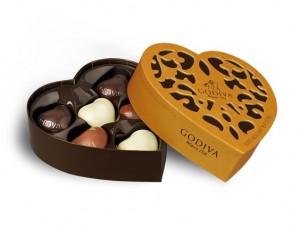Packaging has a crucial role to play for any successful confectionery brand. First and foremost it has to preserve the quality and taste of the products inside. It must also stand up to the stresses and strains of transportation while being aesthetically appealing enough to stand out on the shelf.
Take the same chocolate bar to an airport, and the packaging designer faces a whole new set of complex challenges that need careful consideration. Confectionery packaging created for the travel retail business— which industry analyst Generation values at £2.19 billion a year— has to do lots more. Most importantly, it has to be carefully aimed at a specific group of travellers because people on their travels buy confectionery for very different reasons.
I got you this lovely box of chocolates
According to a recent survey undertaken by research agency m1nd-set, 40% of confectionery purchases in travel retail are gifts. Among Asian travellers, that percentage of gift purchases is even higher at 47%.
Other travellers are looking to buy a regional sweet treat as a souvenir. Parents often search for fun confectionery items for their children. Some hungry passengers just wish to purchase a snack to treat themselves on their flight home. And it is here where successful packaging partners add value – in the ability to match the perfect packaging solution to each one of these different purchasing motivations.
Premium confectionery

Premium confectionery is one of the fastest growing sub-categories in the travel-retail sector. Prestige Belgian chocolatier Godiva has been at the forefront of this trend. For instance, last year the company released the Coeur Iconique Travel Exclusive Edition 2016 – a heart-shaped box containing six praline or ganache chocolates.
The box’s striking design featured one of either two fashionable colourways (teal and salmon and duck egg blue and orange) that Godiva predicted would be trendy in 2016. Each box had an eye-catching die-cut effect with a soft touch matt texture, making it an attractive, reusable gift in its own right.

Swiss confectioner Lindt has had success in Asian airports with its exclusive Diva truffles
range, which is targeted at style-conscious women. The luxury boxes of various sizes and shapes resemble jewellery chests and necklace presentation boxes. Their monochrome colours make reference to classic fragrance labels, while the accompanying black bows on each box resemble the bows used to package lingerie at high-end department stores.
The gifting potential of travel retail gives even mainstream brands such as Toblerone the chance to premiumise their brand image. For instance, one of the Swiss chocolate brand’s most memorable and successful travel-retail exclusive launches was a vintage, suitcase-case shaped carton. Cleverly, the design was flexible enough to allow for the application of location-specific stickers to so that different travel-retail markets could personalise the box.
Are we there yet?
In contrast, the children’s confectionery segment in travel-retail is driven by fun, colourful and well-known international brands such as M&M’s, Smarties and Chupa Chups. Packaging that combines toys with the confectionery have proved particularly successful in the children’s sector over the years, especially those items incorporate a travel theme such as aeroplanes and plush toy backpacks.
However, with concerns rising globally about childhood obesity, children’s travel-retail confectionery packaging should pay strict attention to portion control and promote designs, which encourage children to delay their consumption of the product. Larger pack sizes and share boxes are likely to fall out of favour in the current climate.
Confectionery has a universal appeal across all ages and cultures, which is why its 5% slice of the overall travel-retail pie looks certain to grow in the years ahead. However, if you want to establish a meaningful presence in this burgeoning market, choose a packaging partner such as Hunter, which has a thorough understanding of this exciting, but highly specialised business.

